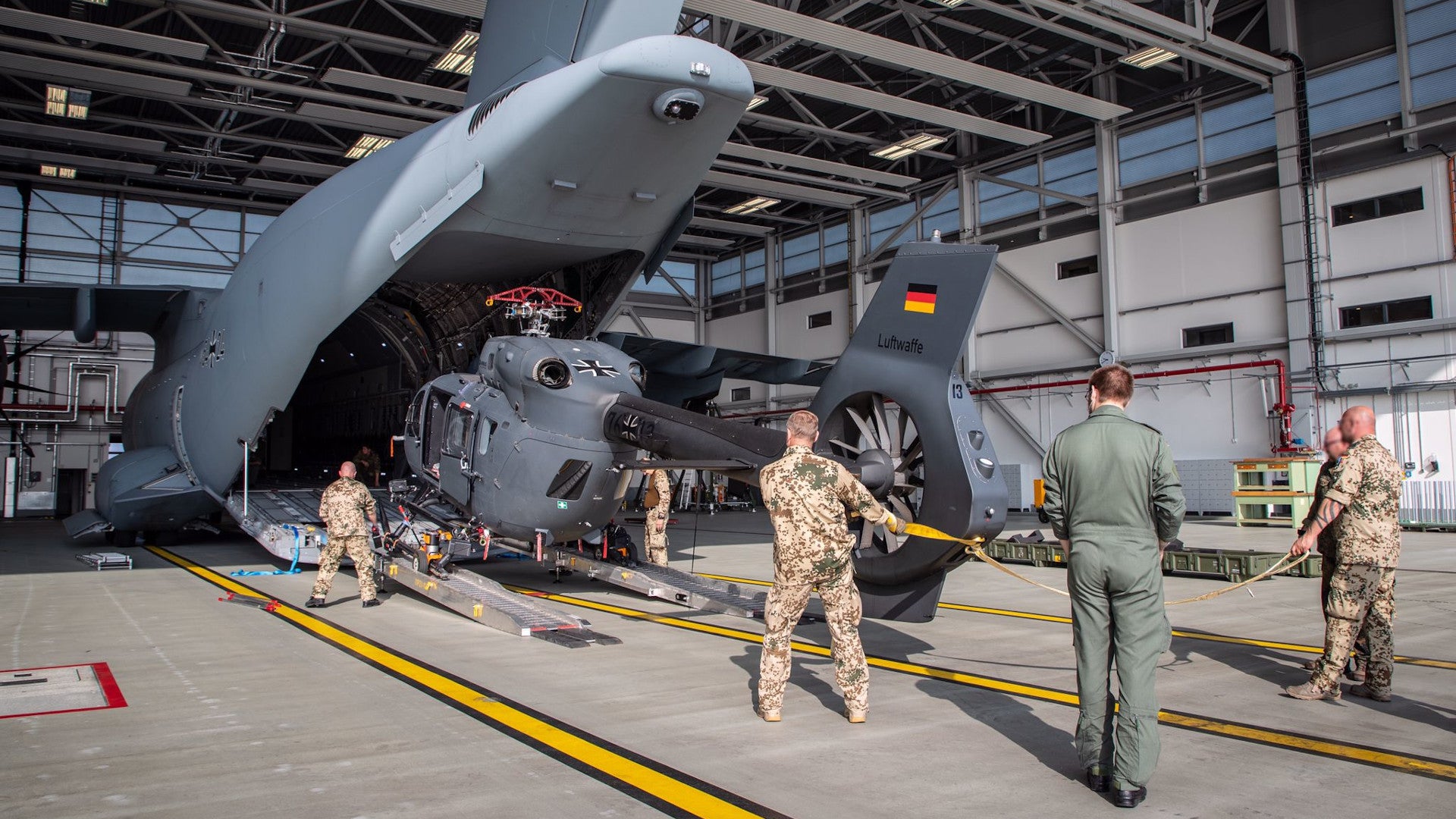As early as tomorrow, a pair of German military Airbus H145M helicopters configured to support special operations missions could be zipping around Kabul helping people evacuate the city. They will be working together with elements of the German Army’s elite Kommando Spezialkrafte, or Special Forces Command, some of which have been at Hamid Karzai International Airport in Afghanistan’s capital since Monday. This comes after British and French forces started conducting similar rescue missions outside of the airport’s perimeter, but while the U.S. military, at least publicly, continues to insist it does not have any intention or the capacity to do the same.
German officials announced the deployment of the pair of H145Ms, via Airbus A400M cargo planes, and their expected mission in Kabul on Aug. 20, 2021. They will join thousands of other U.S. and foreign troops, including another contingent of special operations helicopters from the U.S. Army’s 160th Special Operations Aviation Regiment (SOAR), already at Hamid Karzai International Airport.
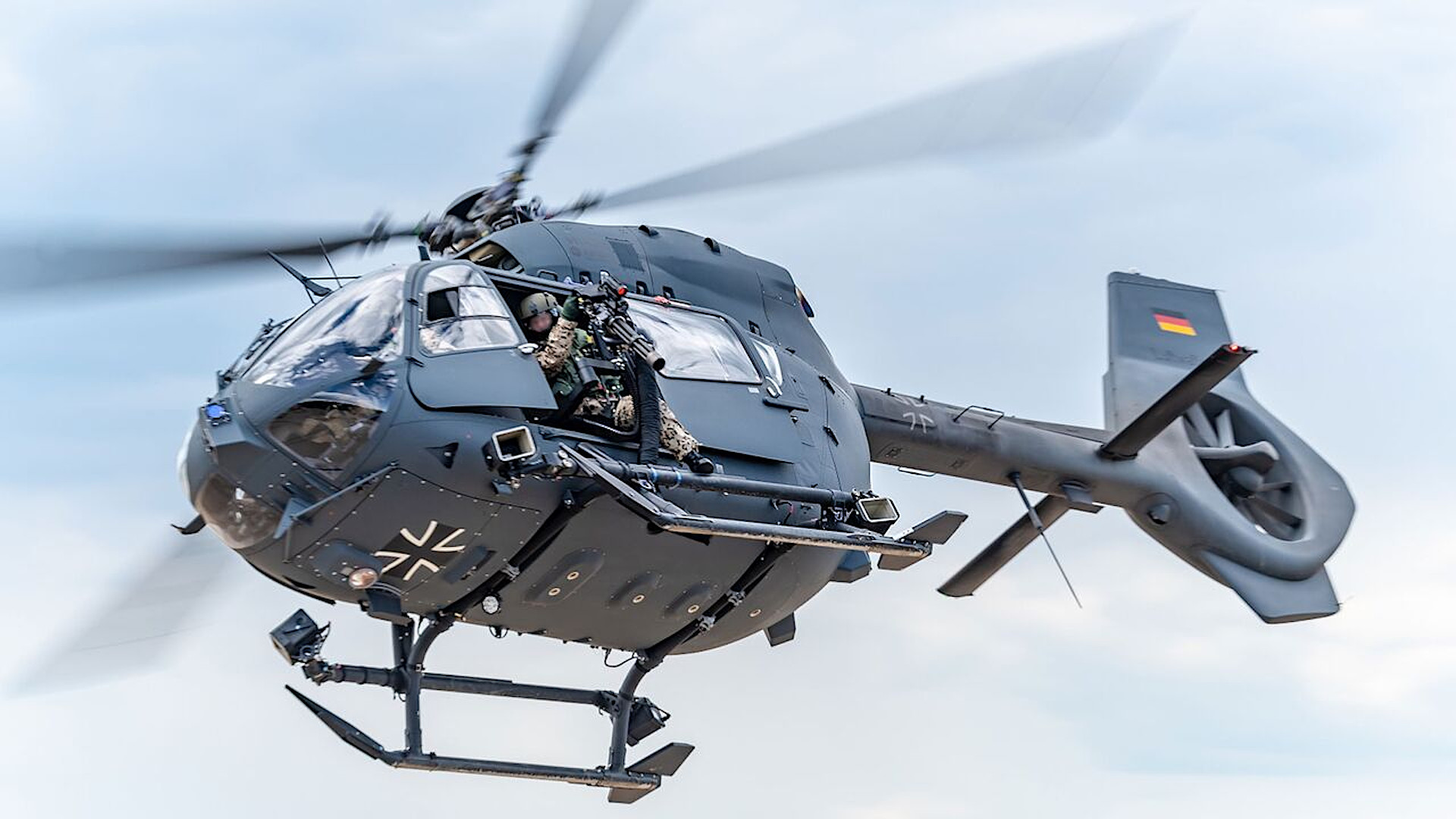
German Air Force A400Ms, as well as Airbus A310 Multirole Tanker Transports (MRTT), have been flying an increasing number of evacuation sorties out Hamid Karzai International Airport since Aug. 16. Chaos in and around the airport hampered those operations initially, with only seven evacuees on the first German flight out of Afghanistan. Navigating through the country’s capital, which is now firmly under the control of the Taliban, just to get to the airport remains difficult, if not potentially perilous, for foreign nationals and Afghans alike.
“We have just informed the German Bundestag that we are expanding our operation in Afghanistan,” a post earlier today from the German Ministry of Defense’s official Twitter account read, using the formal name of the country’s parliament. “The aim is to bring those to be protected from their whereabouts in Kabul to the airport.”
Between 2015 and 2017, Germany acquired 15 specially-configured H145Ms to support the Kommando Spezialkrafte (KSK). The H145M is one of the latest variants in the highly successful H145, which is derived from the Eurocopter EC145. H145s, and the earlier EC145s, are in widespread military and civilian use around the world. This broad family of helicopters includes the variants of the UH-72 Lakota in service with the U.S. Army and the U.S. Navy.
The H145M is powered by a pair of Turbomeca Arriel 2E engines and can cruise at just over 130 knots. It comes standard from Airbus with a glass cockpit, digital avionics, and other modern systems. Germany’s helicopters, also sometimes referred to by the name of the program under which they procured, Light Utility Helicopter Special Operations Forces (LUH SOF), have a number of additional distinctive features, including provisions for fast-roping equipment, as well as missile approach warning sensors and dispensers on the skids for launching decoy flares.
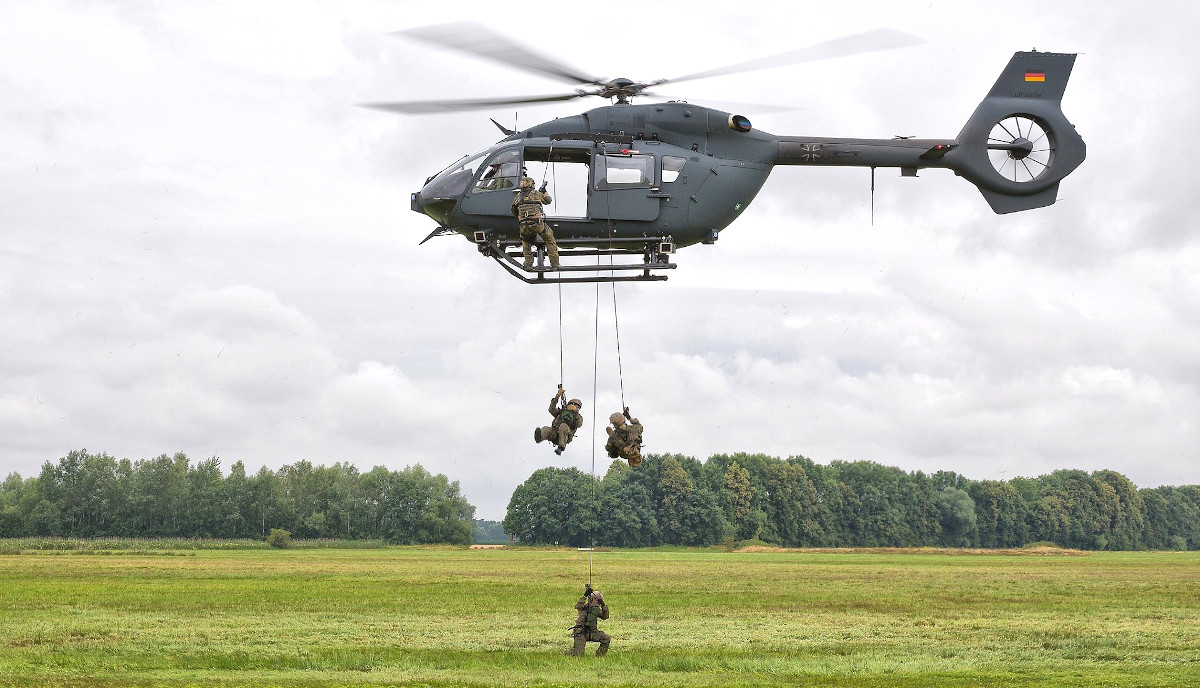
The Germany H145Ms can also be armed with 7.62mm Minigun Gatling-type machine guns, known as the G6 in German service, on mounts in the doors on either side of the main cabin. There are no Miniguns visible in the official pictures the German armed forces have released so far regarding the deployment of these helicopters, but a gun mount appears to be visible on at least one of the two helicopters as it is being loaded onto an A400M.

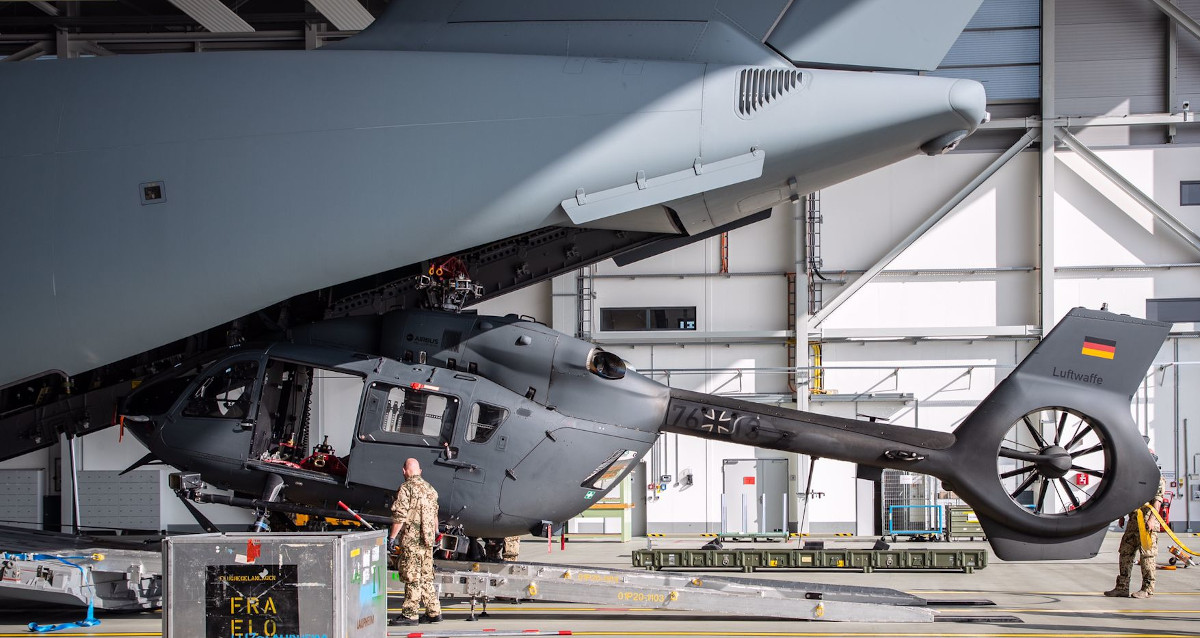
Exactly how the German military will employ these helicopters remains to be seen, but German news outlet Der Spiegel
has reported that the plan is to use them to extract individuals from areas of Kabul and bring them to the safety Hamid Karzai International Airport.
“The Bundeswehr emphasized that the KSK helicopters should only be used over Kabul,” according to Der Spiegel, using the formal name for the German armed forces. “In addition, every flight must be well prepared, a meeting point and signs agreed with which the people to be rescued can clearly identify themselves. The time on the ground must be as short as possible so that there is no crowd.”
Der Spiegel also highlighted how the relatively small H145Ms could be particularly useful for operating within a dense urban area such as Kabul, being able to more readily land on rooftops or in small open areas on the ground in order to rescue people compared to larger types. The helicopters could also help provide cover for teams working on the ground.
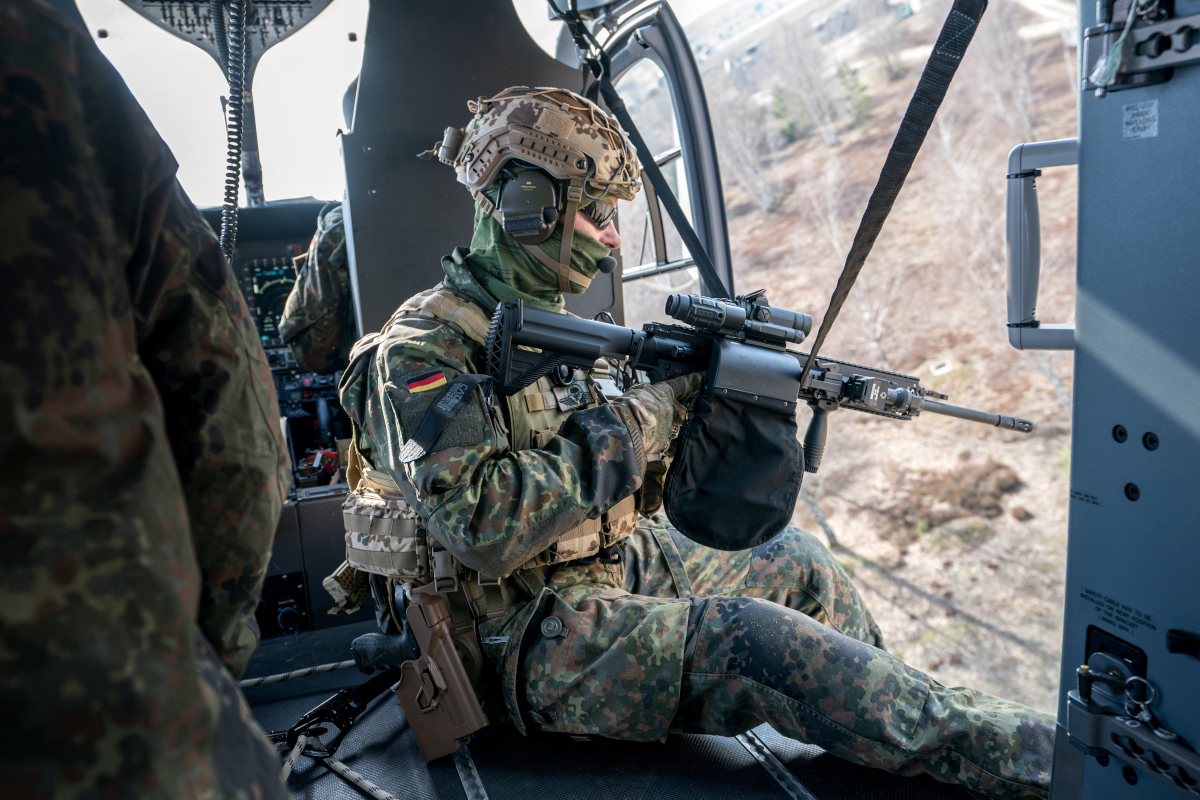
“It won’t be a normal taxi shuttle,” Eberhard Zorn, the Bundeswehr Inspector General, said according to Der Spiegel.
With regards to which individuals the KSK might be soon be looking to rescue, the German government has said it is working to help both “German nationals and other persons at risk” get out of the country safely. There are reports that several hundred, but less than 1,000, German citizens remain in Afghanistan at present.
Despite reports that the Taliban have given assurances that foreigners will be allowed to leave unmolested, there are numerous reports that reality on the ground is very different. The situation is also much more dangerous for Afghans, especially those who have worked with foreign governments over the past two decades and are now at risk of Taliban reprisals.
Just with regards to Germany, at least one German national was shot while traveling to the airport, though thankfully the wound was not life-threatening. Separately, a relative of an Afghan reporter working for German state broadcaster Deutsche Welle in Germany was murdered by the Taliban, and another member of their family was seriously injured in the attack.
With all of this in mind, there are also questions about whether the Taliban will allow the German H145M helicopters to conduct their activities in Kabul without interference. Bundeswehr Inspector General Zorn said there is an assumption that the Taliban will “let the helicopters go,” according to Der Spiegel, but there does not appear to be even any formal assurances, for whatever those might be worth, that this will happen. If the helicopters or KSK personnel come under attack and are forced to defend themselves it’s not hard to see how that could escalate into a more serious situation that could have subsequent impacts on foreign evacuation operations at Hamid Karzai International Airport.
At the same time, it is worth noting that British and French forces have been conducting similar activities on the ground in Kabul outside of the airport for days now without any major reported pushback from the Taliban.
Meanwhile, the U.S. military has publicly insisted it is focused entirely on operations at the airport itself and is not planning to send troops out into the city to round up American citizens and others. President Joe Biden and other U.S. officials did confirm today that American forces at the airport have helped people get over the perimeter walls, in addition to through established gates.
It is worth noting, though, that elements of the U.S. Army’s 160th SOAR would be ideally suited to performing similar missions to the ones the German military is planning to carry out with their H145Ms, and would be able to do so on a much broader scale, if they aren’t already. The 160th’s mix of AH/MH-6 Little Bird, MH-60 Black Hawk, and MH-47 Chinook helicopters presently in Kabul offers a wide array of unique capabilities, including the ability to carry out highly surgical close air support missions, if required, which you can read more about here.
Yesterday, the Associated Press reported that unspecified American forces, working with “multiple allies,” including the British, had carried out a mission to rescue a former Afghan National Police officer and members of his family. The New York Times
has also now reported on independent efforts carried out by its own employees to help Afghans get to the safety of the airport.
The situation in and around the airport remains tense and fluid. Evacuation operations, all of which have to share the airport’s single runway, are also still facing various hurdles. Today, it emerged that commercial flight operations had been shut down for approximately eight hours due to bureaucratic and logistical issues inside and out of Afghanistan that had resulted in congestion on the military side.
All of this only adds to persistent questions about how long it might take to complete all of the planned foreign evacuation operations. Speaking today, President Joe Biden committed to getting all Americans, as well as various at-risk Afghans, out of the country, but declined to say whether or not the expectation was still that it would be possible to get this done by the end of the month, when the entire mission is supposed to end.
This, of course, doesn’t take into account that the Taliban could change their position at any moment on allowing an island of foreign military presence at the airport in Kabul, where thousands of troops are on the ground now and with more, such as this new German contingent, on the way, to exist at all. Any concerted and deliberate attacks by the Taliban on foreign forces at Hamid Karzai International Airport would, of course, completely change the character of the ongoing evacuations there and any operations elsewhere in Afghanistan’s capital. Depending on how rapidly the security situation might then devolve, troops at the airport might be forced to hastily evacuate, which might compel them to abandon large pieces of equipment, such as helicopters, that cannot be quickly loaded onto flights out of the country.
No matter how the overall situation in Kabul continues to evolve, Germany’s deployment of the two H145M helicopters underscores that more and more foreign governments are coming to the conclusion that they cannot limit their evacuation activities to the confines of Hamid Karzai International Airport. It’s not clear how anyone can reasonably expect the majority of foreign nationals, not to mention at-risk Afghans, to otherwise even get to the airport safely.
Update 4:50 PM EST:
The full statement from Bundeswehr Inspector General Eberhard Zorn also says that the U.S. military requested the deployment of the H145Ms to help support operations.
“These helicopters were requested by the American side,” he said, according to Behörden Spiegel. “The Americans mostly fly there with large-volume helicopters, so they needed a smaller machine in the urban environment of Kabul.”
“So it’s always a collaborative effort,” he continued. “We always have a corresponding airmobile intervention reserve provided by the Americans in the background. So that means they are real aerial operations.”
Contact the author: joe@thedrive.com
